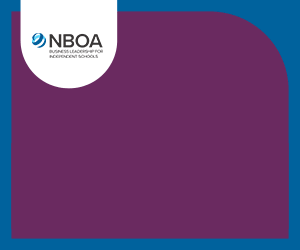
NBOA President and CEO
Many competitive forces are impacting the preK-12 school market, but new schools that claim to have a lock on personalized learning are among the most worrisome to me. Our schools’ ability to build strong connections with students, create vibrant learning communities and really know each student is like no other. If we continue to define our environments by student-to-teacher ratios or class size, however, I think we will erode our distinct value proposition in this area. Words matter. How we define ourselves matters. In a complex and competitive education environment, it is difficult to break through, even when your offering is valuable to your market.
Look no further than our colleagues and peers within small colleges. I read with great interest the Hechinger Report article “With Enrollment Sliding, Liberal Arts Colleges Struggle to Make a Case for Themselves.” A recent national meeting of liberal arts institutions began with the imperative “Define the liberal arts.” “It is interesting that that’s where we still are,” one college leader noted.
Over the past 50 years, 28 percent of small private colleges, most of them liberal arts focused, have closed, merged or changed their missions, according to a recent report by the Journal of Higher Education. Journalist Jeff Selingo and others have debunked the myth that liberal arts graduates don’t do well on the job market. And yet the liberal arts remain under fire, with a handful of colleges eliminating or threatening to wipe out majors such as English and history because of declines in enrollment. The teachable moment for me is, if you can’t define your value, others won’t do it for you.
What is your school’s value? What is the value of an independent school education overall? Can we answer that definitively?
I couldn’t help but wonder, are we facing a similar definition problem of our own? What is your school’s value? What is the value of an independent school education overall? Can we answer that definitively? If not, are we destined to follow the path of liberal arts education? I personally hold the liberal arts in high regard, but the learning model is under immense pressure to demonstrate its value for graduates.
If you want to see an institution that is getting it right in my opinion, checkout the Furman Advantage, a clearly defined set of objectives that expertly captures the value of a liberal arts education and not only defines but re-defines what this education means, clearly and succinctly: “This integrated four-year pathway, guided by a diverse community of mentors, prepares students for lives of purpose and accelerated career and community impact — demonstrating in concrete terms the value of a Furman education.”
Hats off to Furman! If they can do it, we can do it. As we head to our summer planning meetings, let’s define what is truly unique about our schools, what we do better than anyone else, and how we deliver our mission in ways that are clearly understood and realized by our school leadership, faculty, students, families and community.




